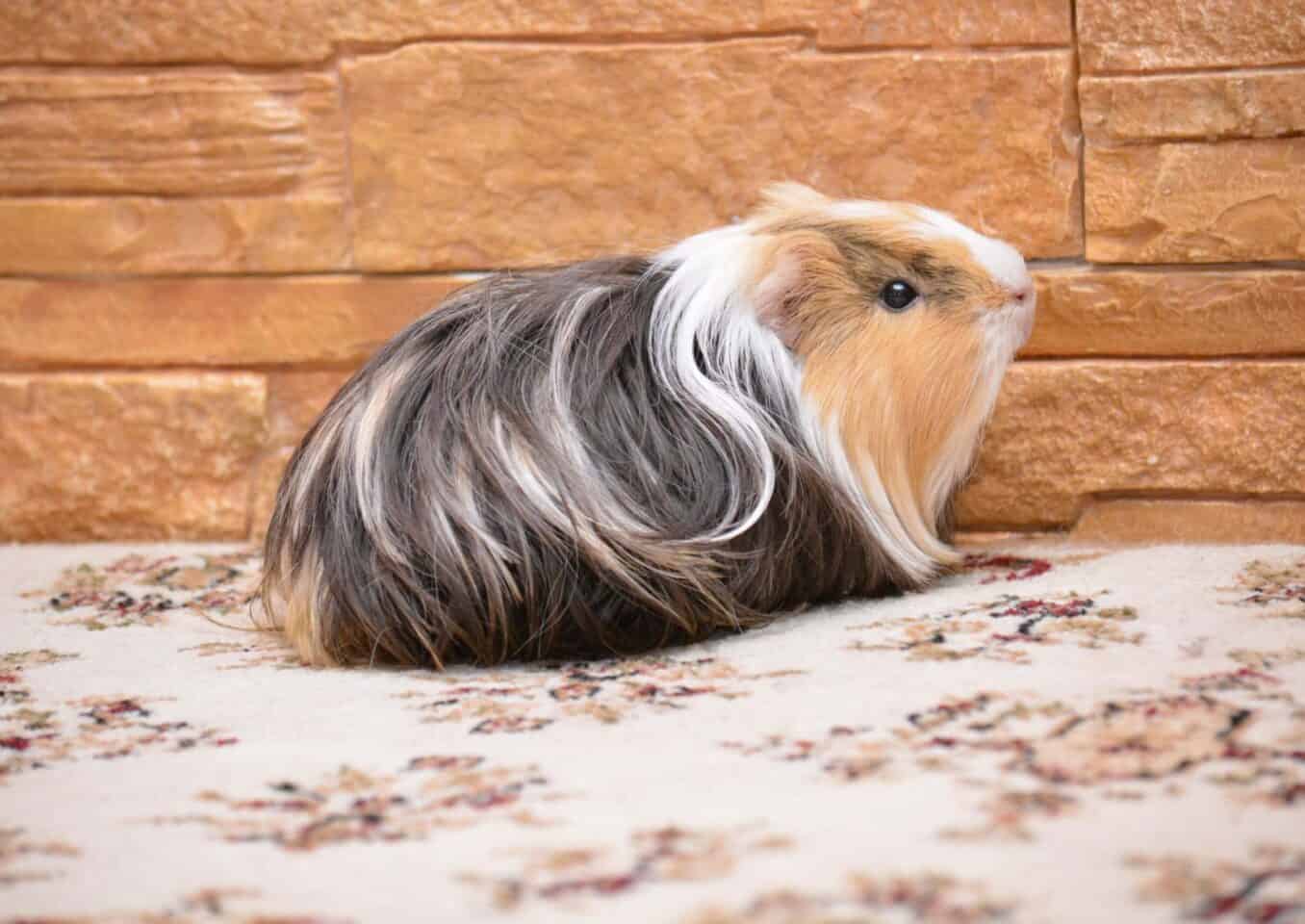The Silkie is an attractive long-haired Guinea pig. It is popular as a pet, and even more popular on the show table. Silkies have lovely locks unlike any other guinea pig.
Their hair is very soft and shiny. Show Silkies are a sight to behold. It’s hard to resist petting a Silkie!
This breed is rather high-maintenance, so it is probably not the best choice for a young child. Even adults who keep Silkies as pets will often trim their hair to keep from having to groom constantly. With their good looks and sparkling guinea pig personalities, they make a fine choice for a dedicated owner.
Scientific Classification
| Kingdom: | Animalia |
| Phylum: | Chordata |
| Class: | Mammalia |
| Order: | Rodentia |
| Family: | Caviidae |
| Genus: | Cavia |
| Species: | porcellus |
Background
The Silkie Guinea Pig is a rather new variety of Guinea pig. Developed in the 1970s, it is the result of crossing between the Peruvian and the Self Black Guinea Pig. Its unique look caused it to gain popularity quickly, and today it is a fairly common breed.
It was recognized in Great Britian in 1973, where it is known by the name of Sheltie Guinea Pig. In the United States it is known as the Silkie.
Description
To the casual observer, the Silkie Guinea Pig is often confused with the Peruvian. While both breeds have long hair, there are many differences between the two.
The Silkie’s hair is slightly shorter than that of the Peruvian, and it falls in a different pattern. The hair grows back from the neck, resembling a mane and leaving the face uncovered. The hair is usually slightly longer at the rear. From above, the Silkie appears to have a teardrop shape.
Silkies can also be found in Satin coats, which are the same as the regular Silkie coat only denser and shinier. Silkie Satins are recognized by the ACBA.
Color differences
Like the other breeds of guinea pigs, Silkie Guinea Pigs come in a variety of colors. Any color except tan are acceptable for showing.
Keeping Guinea Pigs
GUINEA PIG CARE
- Guinea Pig History
Guinea pig breeds - Purchasing a Guinea Pig
Adopt a guinea pig - Guinea Pig Care
Guinea pig health and ‘what do guinea pigs eat’ - Pet Guinea Pig Housing
Guinea pig cages - Guinea Pig Behavior
Guinea pig sounds - Guinea Pig Training
How to handle and train your guinea pig - Guinea Pig Activities
- Guinea Pig Breeding
Baby guinea pigs – how to raise guinea pigs - Guinea Pig Illnesses
Guinea pig health care
Be sure to provide your guinea pig with a good home and a proper diet. This will keep it happy and healthy and ensure a great pet for a long time.
Guinea pigs need plenty of exercise and they also love to play. You can let them outside or run around in the house for short periods of time under supervision. They love to explore and need at least one hour of supervised ‘floor time’ every day.
When picking up a guinea pig make sure you do not grab it only by its shoulders. Just keep in mind when picking your pet up to do it evenly. With your hands, support it’s entire body, and be careful not to drop it.
Guinea pigs are social creatures and will like to have a companion. They are great companions for children.
Take time to learn what your guinea pig needs, including
- housing
- care and feeding
- social behaviors
- activities
- handling and training
- breeding guinea pigs
- baby guinea pigs
Availability
Silkies may be somewhat harder to find than some other breeds. But they can often be located in pet stores, and breeders may be found online. Prices are usually $20 to $30.
Guinea Pigs come in many varieties and are readily available at pet stores, shelters, and rescues. When looking to acquire a pet guinea pig make sure it is a healthy animal. A healthy guinea pig will have brilliant eyes, good sound teeth, and a healthy coat. Any age and either sex will make a good pet, however you should plan to get more than one as they are very social and do best with a companion. Get a same sex pair or you could end up having babies.
Featured Image Credit: JumpStory
